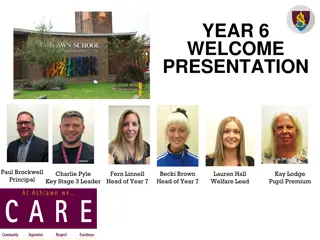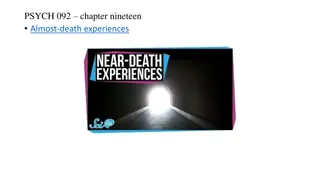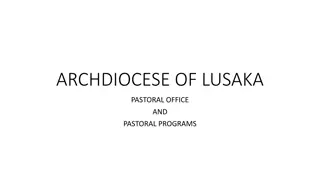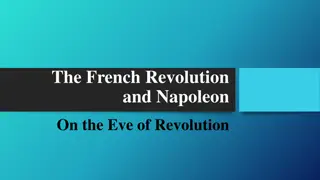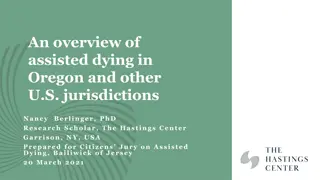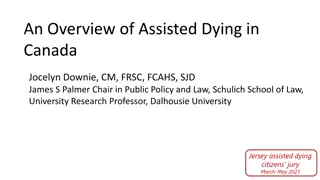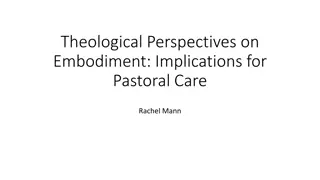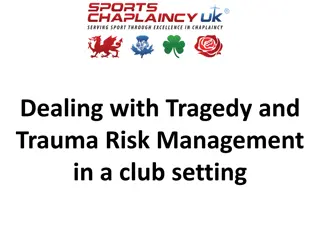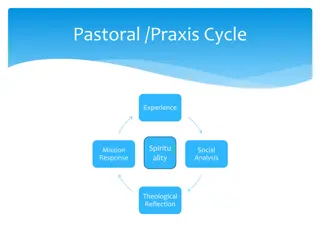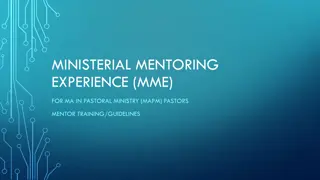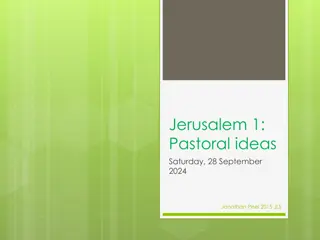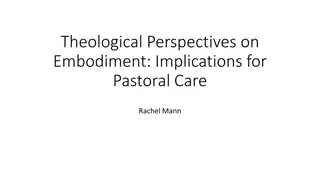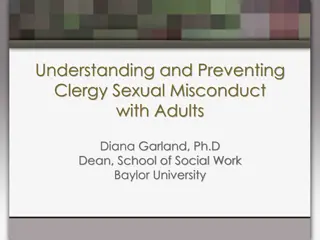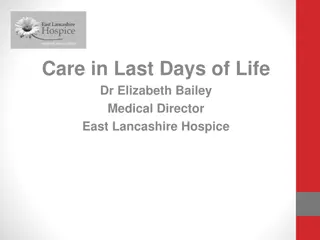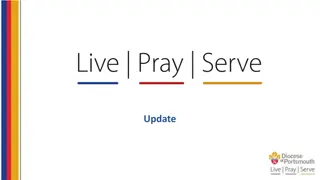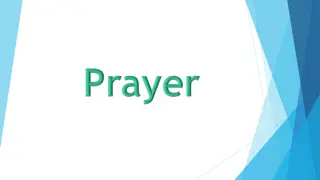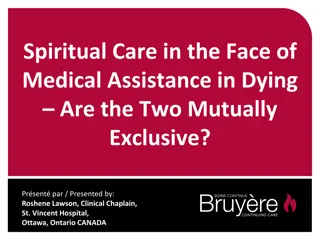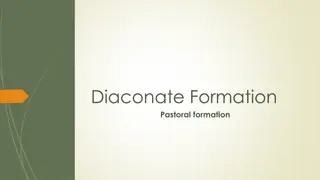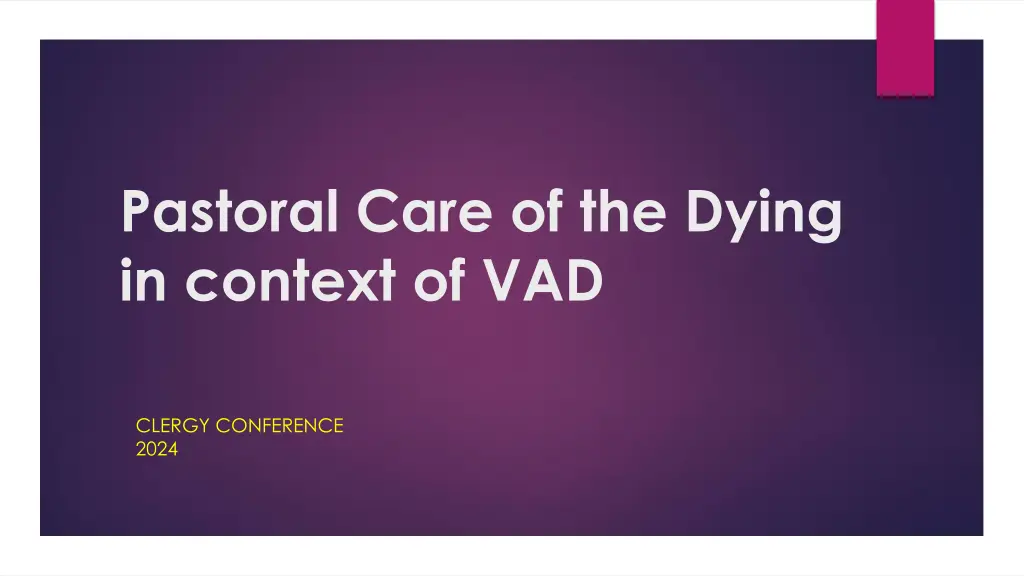
Pastoral Care of the Dying: Compassionate Guidance in Challenging Times
Discover the compassionate approach to pastoral care of the dying within the context of VAD clergy conference 2024. Learn about Pope Francis' inclusive pastoral mindset, the importance of discernment in guiding individuals, and the significance of welcoming all to find solace in the church. Explore strategies for accompanying the dying with hope, the essence of discernment in spiritual growth, and the ethical considerations when faced with voluntary assisted dying situations.
Uploaded on | 3 Views
Download Presentation

Please find below an Image/Link to download the presentation.
The content on the website is provided AS IS for your information and personal use only. It may not be sold, licensed, or shared on other websites without obtaining consent from the author. If you encounter any issues during the download, it is possible that the publisher has removed the file from their server.
You are allowed to download the files provided on this website for personal or commercial use, subject to the condition that they are used lawfully. All files are the property of their respective owners.
The content on the website is provided AS IS for your information and personal use only. It may not be sold, licensed, or shared on other websites without obtaining consent from the author.
E N D
Presentation Transcript
Pastoral Care of the Dying in context of VAD CLERGY CONFERENCE 2024
Pope Francis pastoral approach Welcome doors open, going out to people Accompaniment stay close to people, smell like the sheep Discernment - what is the next step God is asking of me, even if it is not the final step Integration into the life, sacraments and communion of the Church
Welcome There is always something we can do to welcome others and invite them to begin to engage with Christ and the Church The Lord blesses everyone then people must see what path the Lord proposes to them but we must help them not condemn them from the beginning
Pastoral Care of the Dying Accompany with Hope Start early! Don t wait till death is imminent, and the patient is unconscious! Begin a conversation what is important to the person at this time? How can we help? Offer the sacraments Recognise the limits of medicine the time will come when a treatment becomes futile or unduly burdensome Encourage advanced care planning the patient should appoint a representative to speak for him or her Stopping or not starting a treatment that is too burdensome for the patient is NOT euthanasia!
Discernment There is always a next step that someone can take to draw closer to God (even if it is not the final step of integration into the full life of the Church) I have always contended that obedience even to an erring conscience was the way to gain light, and that it mattered not where a man began, so that he began on what came to hand, and in faith; and that anything might become a divine method of Truth. John Henry Newman, Apologia pro Vita Sua
Accompanying people in the context of voluntary assisted dying Note that VAD (voluntary assisted dying) is a deceptive term, which hides what really happens! In VAD, either a patient uses a lethal substance to end their life, or a doctor administers the lethal substance; VAD = deliberate killing (suicide or murder) Why it is wrong to kill or commit suicide The Christian response to suffering Human persons never lose their dignity we begin and end our lives as vulnerable people, relying on others and responsible to others. Only for a certain period of our lives are we relatively autonomous agents ! Someone saying, I want to die is very often reaching out for care and asking, will you accompany me?
Responding to someone asking for VAD Discernment what should I do? Identify a person s proper responsibilities PERSPECTIVE OF THE ACTING SUBJECT (John Paull II) Patient, family members, health professional, pastoral worker, priest . Responsibilities of the priest Minister of the Sacraments of Healing (Reconciliation, Anointing, Eucharist) preferably with prior accompaniment, and with a Pastoral Conversation People will also look to the priest for ethical advice Explain difference between euthanasia / VAD and prudent decisions to cease a burdensome treatment VAD is not a medical treatment, and is not part of Palliative Care
The perspective of the patient The priest must engage and dialogue with the patient, and so must understand the mind and heart of the patient, who may be THINKING about VAD? DECIDED upon VAD? ABOUT TO COMMIT VAD? OPEN TO CONVERSION?
The perspective of the priest What is the next step I should take as a priest? Keep listening to the patient? Pray with the patient? Bless the patient? Hear confession and give absolution? Leave the room (if VAD is imminent)?
Offering and receiving the Sacraments Integration See sections 37- 51 of the Bishop s document To Witness and to Accompany with Hope If a patient is just thinking about euthanasia, but still open to hear the teaching of the Church . Still discerning their next step then receiving the sacraments can be appropriate If patient is favouring VAD, but it is not imminent, i.e. there is still time to change, and he just might change absolution may be appropriate If patient is about to commit VAD, prayers beforehand are appropriate, even a blessing prayer, but not the sacraments. Priests should not be present when VAD takes place


